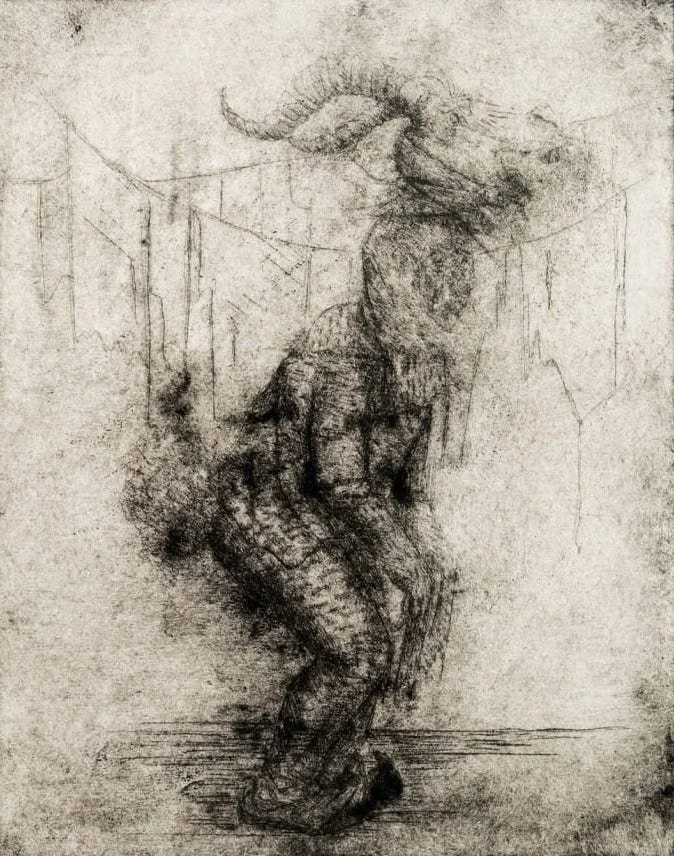
ETCHING
A metal plate, usually copper or zinc, is coated with a waxy ground that is then drawn into, removing areas of the 'ground' that will finish in the print as black or coloured areas. This is achieved with a variation of different methods dependent on whether the wax is 'soft' or 'hard'. The plate is repeatedly put in an acid bath, the exposed areas are then etched or eaten away producing a sunken line that will receive the ink. The length of time the metal is exposed within the acid bath will effect the darkness and character of the lines.
The plate is inked up and then wiped clean so that the ink is forced into the sunken areas of the plate eaten into by the acid and any ink left on the upper surface of the plate is removed. A damp paper is placed onto of the plate which is run through a press. This press is extremely heavy and blankets are placed onto of the paper to help with the pressure of the rollers. The combination of the damp paper and the pressure of the press help to transfer the ink from the plate onto the paper.
Hardground vs. Softground: Both refer to the softness of the wax applied. With a hardground etching, the wax is much harder and is smoked with a taper so the soot embeds in the wax and gives it a darker surface to work on. The wax is hard and therefore needs to be scratched away, or removed with white spirit.
With softground, a much softer wax is applied to the plate and a layer of thin paper is laid gently over the top. The artist draws directly on to the surface of the paper, thereby transferring the wax from the plate onto the paper, exposing the plate for the acid. This often results in more crayon-like markings. This wax is often so soft, that the artist has to take particular care to avoid touching other areas of the paper.
Photo-etching: The printing plate, usually copper, is painted in light-sensitive emulsion and a photographic negative is pressed against it. Together it is exposed to light which hardens the clear parts of the image. Once processed the hardened parts resist the acid and the plate can be etched.

